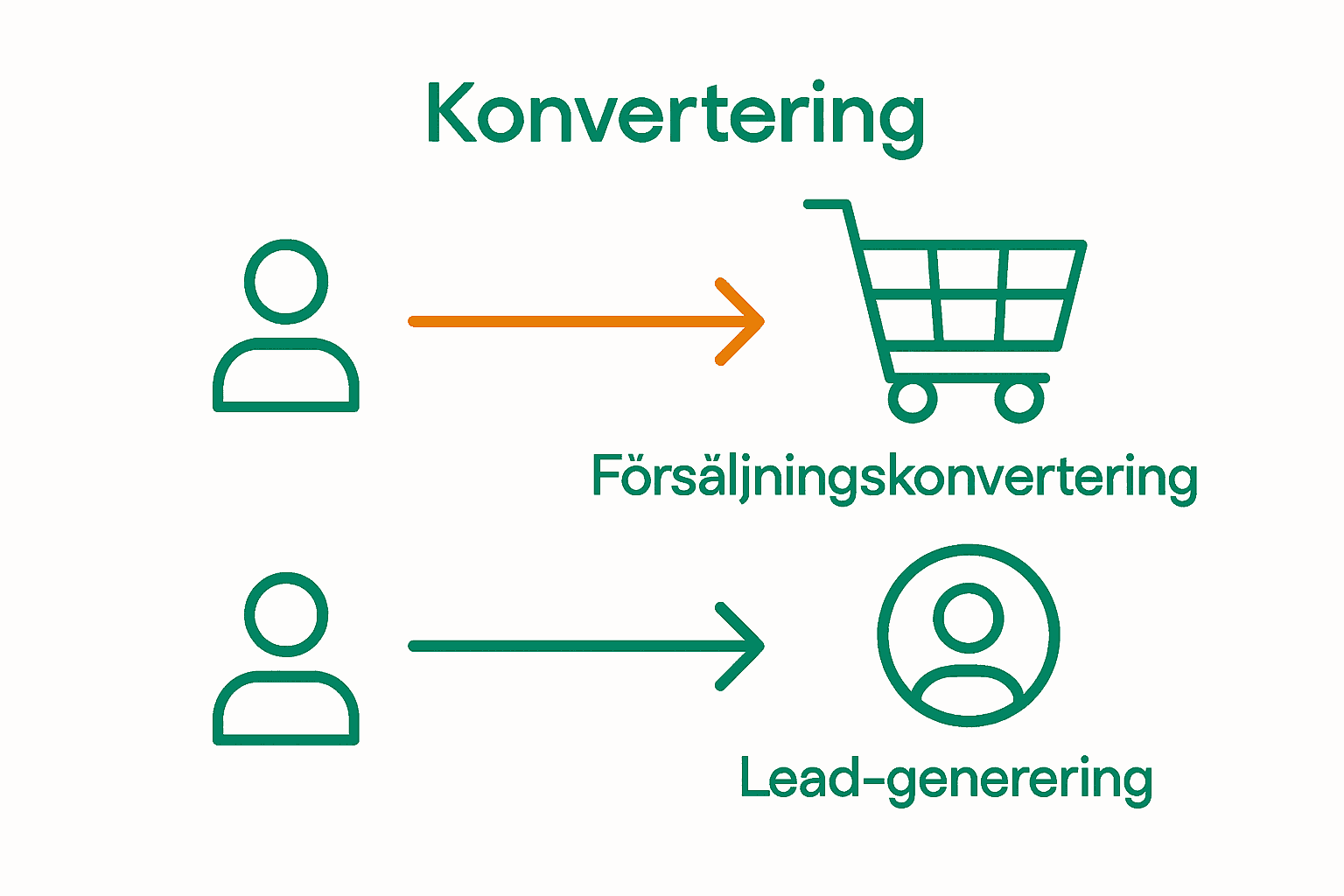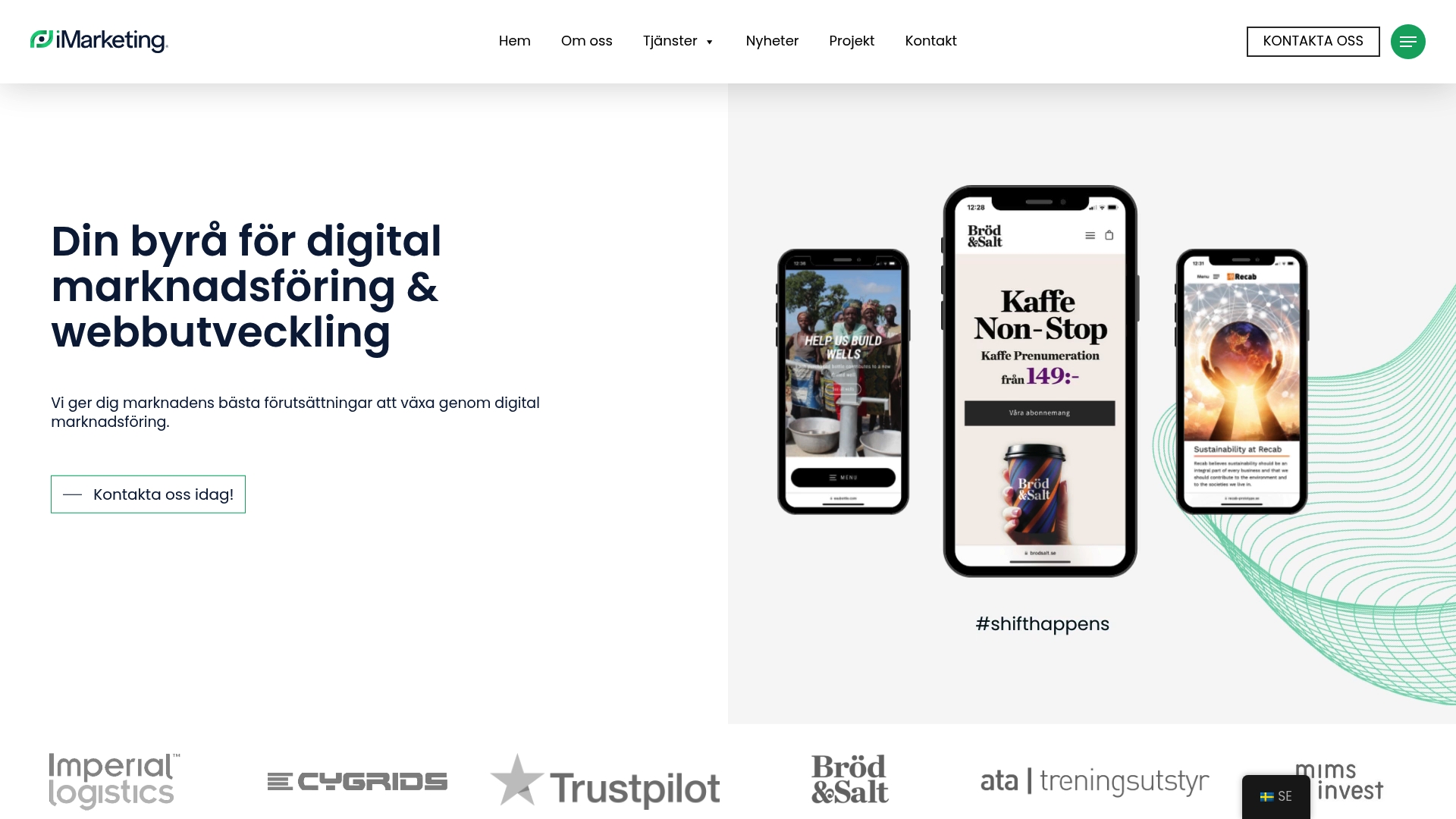More than 80 percent of businesses miss out on important business because their website doesn’t convert visitors into customers. In a world where every click counts, small adjustments can make the difference between success and missed opportunities. Here, you’ll gain insight into why conversion rate is crucial to all digital marketing and how you can understand, measure, and improve your results to grow online.
Table of contents
- What does conversion rate mean in digital marketing?
- Different types of conversions and their importance
- How to calculate and analyze conversion rate
- Common mistakes and how to avoid them
- Practical tips to increase conversion rates
Key Points
| Point | Details |
|---|---|
| The importance of conversion rate | Measures how effectively a website converts visitors into customers, which is central to assessing marketing campaigns. |
| Different types of conversions | Understanding different conversion types (sales, lead generation, engagement) is crucial to aligning strategies to the business model. |
| Calculation and analysis | Conversion rate can be calculated using a simple formula; detailed analysis of data is important to identify improvement opportunities. |
|
| Optimization strategies | Effective conversion optimization includes clear CTAs, fast web design, and trust-inspiring elements to increase customer engagement. |
What does conversion rate mean in digital marketing?
Conversion rate is a crucial KPI in digital marketing that measures the percentage of visitors who complete a desired action on your website or digital platform. Simply put, it is about turning potential customers into actual customers through specific measurable activities.
In practice, conversion rate means the percentage of visitors who complete a defined targeted activity – for example, making a purchase, filling out a contact form, downloading a report or signing up for a newsletter. Complete guide to conversion optimization in 2025 shows that this figure varies greatly between different industries and business models.
For digital marketers, conversion rate represents a critical metric of campaign effectiveness and website performance, revealing how well your digital strategy is converting traffic into meaningful business results. High conversion rates indicates that your website is well-designed, has compelling content, and clear calls to action, while low scores signal a need for improvement and optimization.
Different types of conversions and their importance
Ecomverse defines conversions broadly in digital marketing. They can be divided into several categories that are crucial for different business models and marketing goals.
The main types of conversions include:
- Sales conversions: Direct purchase of products or services
- Lead generation: Potential customers' contact information collected
- Enrollment conversions: Registrations for newsletters, webinars or accounts
- Download conversions: Downloading reports, guides, or resources
- Engagement conversions: Specific user interactions like video views or clicks
Ripples emphasizes that each conversion type has a unique value for businesses. Sales conversions are the most direct form of business results, while lead generation creates opportunities for future contracts. Engagement conversions build brand awareness and trust, which are equally important for long-term growth.
Here is a comparison between different types of conversions and their importance to businesses:
| Type of conversion | Example | Business value |
|---|---|---|
| Sales conversion | Purchase of product or service | Direct income |
| Lead generation | Email/phone collection | Opportunity for future business |
| Enrollment conversion | Newsletter registration Webinar |
Build target audience and loyalty |
| Download conversion | Report/Guide Download | Generate leads and qualify interest |
| Engagement conversion | Video viewing Click on link |
Increases brand awareness and trust |
For small and medium-sized enterprises, it is crucial to improve conversions step by step by understanding which conversion types are most relevant to their particular business model.
 This involves careful analysis of the customer journey, optimizing the website design, and creating compelling content that encourages desired user actions.
This involves careful analysis of the customer journey, optimizing the website design, and creating compelling content that encourages desired user actions.
How to calculate and analyze conversion rate
Conversion rate is calculated by a simple mathematical formula that measures the percentage of visitors who complete a desired action. The basic calculation is done by dividing the number of completed conversions by the total number of visitors and then multiplying the result by 100 to get a percentage representation.
The calculation formula looks like this:
Conversion Rate (%) = (Number of Conversions / Total Number of Visitors) × 100
To effectively analyze conversion rates, companies need to use tools such as digital analytics tools for sales such as Google Analytics or specific conversion tracking platforms. These tools allow for detailed tracking of:
- The source of conversions
- Timing of conversions
- Specific user behaviors
- Conversion paths
When analyzing conversion rates, it’s crucial to look beyond the overall number and instead focus on the parts. This means examining different channels, segment performance, and identifying specific bottlenecks in the conversion process that can be improved. Through continuous measurement and optimization, businesses can gradually increase their conversion rates and improve their digital marketing results.
Common mistakes and how to avoid them
Conversion optimization is a delicate process where small mistakes can have big consequences. One of the most common mistakes is focusing solely on quantity instead of quality when it comes to website traffic and conversions.
Here are the most critical mistakes companies often make:

- Poor landing page design: Cluttered layout that distracts visitors
- Unclear calls to action (CTAs): Unclear or weak buy buttons
- Slow loading time: Websites that take more than 3 seconds to load
- Lack of trust signals: Lack of reviews, certifications or guarantees
- Non-responsive design: Poor adaptation to mobile devices
With copywriting techniques can improve communication and make the message more convincing. It's about creating clear, engaging texts that guide the visitor through the conversion process and eliminate any doubts.
To avoid these mistakes, continuous testing and optimization are required. Use A/B testing, analyze user behavior, and be prepared to make ongoing adjustments. Conversion rate success is about constantly understanding and adapting to customer needs and behavior.
Practical tips to increase conversion rates
Conversion optimization requires a strategic and systematic approach that combines technical improvements with compelling communication. Successful companies focus not only on attracting traffic but on converting visitors into active customers.
Some crucial strategies include:
- Clear and powerful Call-to-Action (CTA): Create compelling buttons that drive visitors towards conversion
- Fast and responsive web design: Ensure smooth experience on all devices
- Confidence-inspiring elements: Include testimonials, guarantees and safety certificates
- Simplified purchasing process: Minimize the number of steps and forms
- Personalized content: Tailor messages based on user behavior
With marketing tactics on social media like TikTok can businesses create engaging content that drives conversions. This means understanding platform-specific behaviors and creating content that resonates with specific audiences.
Ultimately, conversion optimization is about continuous testing and iteration. Conduct regular A/B tests, analyze user data, and be prepared to quickly adapt your strategies. Success comes from the ability to understand and anticipate your customers’ needs and behaviors.
Take control of your conversion rate and maximize your business
Understanding and improving conversion rates is crucial to turning website visitors into loyal customers. Many businesses face challenges like unclear CTAs, slow websites, and lack of trust signals. This creates frustration and lost opportunities. By analyzing the customer journey and using the right digital tools, you can easily discover what’s hindering your conversions and improve every step of the process.
On iMarketing.se We offer comprehensive solutions that combine web design, optimization and effective marketing strategies. With our expertise, you can create a responsive and fast website, develop engaging content and implement smart CTAs that really convert. We also help you use digital analytics tools to measure and optimize just as you read in the guide.

Do you want to stop losing potential customers and start increasing your sales today? Visit iMarketing.se and take the step towards a stronger digital presence that drives results. Let us be your partner in improving your conversion rates and creating sustainable growth.
Frequently Asked Questions
What is conversion rate?
Conversion rate is a key metric that measures the percentage of visitors who complete a desired action on your website, such as making a purchase or filling out a form.
How is conversion rate calculated?
Conversion rate is calculated by dividing the number of conversions by the total number of visitors and multiplying the result by 100 to get a percentage.
What types of conversions are there?
There are several types of conversions, including sales conversions, lead generation, sign-up conversions, download conversions, and engagement conversions.
How can I improve the conversion rate on my website?
To improve conversion rates, it is important to create clear Calls-to-Action, optimize web design, build trust with testimonials, and ensure a smooth user experience.
Recommendation
- Complete Guide to Conversion Optimization 2025 - iMarketing
- How to Improve Conversions: Step-by-Step for Success – iMarketing
- top advertising tools for google ads – Expert comparison 2025 – iMarketing
- How to drive more sales with digital tools – iMarketing
- Corporate Film Guide: Create an Effective Video for Your Brand »
- Comprendre le taux d'optimisation de conversion


